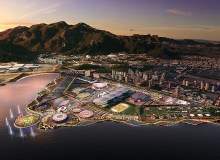
With countless sustainability targets to meet during the next decade, buildings from houses to hospitals must be relied upon to help boost the world’s economy and reduce global carbon emissions.
Gone are the days of constructing buildings with the sole purpose of providing shelter; structures must now be designed to respond to naturally occurring phenomena, including the weather, subterranean conditions, permeability of materials and energy consumption.
Using innovative architectural and engineering technology, buildings are required to endure tough conditions and be self-sufficient in order to live longer and reduce the need for new-builds.
Here, we list some examples of the most sustainable stadiums, towers and eco centres built or under construction in the world.
Tianjin Eco-City, China
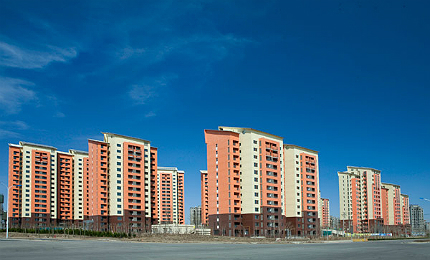
Tianjin Eco-City is a modern township project being jointly developed by the governments of Singapore and China. Set for completion in 2020, the project will include 100,000 sustainable homes, leisure facilities and business parks.

US Tariffs are shifting - will you react or anticipate?
Don’t let policy changes catch you off guard. Stay proactive with real-time data and expert analysis.
By GlobalDataThe site also features an eco-valley – a 12km–long manmade channel connecting the residential districts with commercial areas from south to north. The city will include three water bodies – Qingjing Lake, Ji canal and Old Ji canal, which will provide a habitat for wildlife and act as recreational spots for residents.
The project will use sustainable technologies, such as solar and wind power, wastewater treatment and seawater desalination, to reduce carbon footprints.
All buildings of the eco-city are equipped with intelligent building systems, building energy optimisation, district cooling/heating systems, vacuum sewage systems and pneumatic waste collection systems.
A water reclamation plant will also be built by Keppel Integrated Engineering. This will have a capacity of 100,000 cubic metres a day and will recycle wastewater from the city to national standards.
Rio 2016 Olympic Park, Brazil
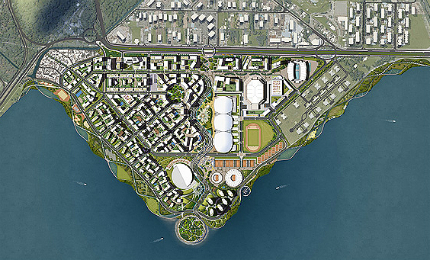
Rio 2016 Olympic Park, situated in Barra de Tijuca, south-west of Rio de Janeiro, will host the Olympic and Paralympic Games in four years time.
Designed by AECOM, the master plan emphasises on commercial, residential and leisure developments in two modes – the Olympic Games mode and the Legacy mode which comes after. The Olympic Games mode is set to provide the most favourable conditions for sports, while the Legacy mode will offer scope for development in the long run.
Urban developments and venues around the park are expected to create a benchmark for sustainability and urban planning.
Permanent facilities will include a science and sports laboratory, a medical centre, athletes’ lodgings, a reception, an Olympic Hall, an athletics track and tennis centre. A Main Press Centre and an International Broadcasting Centre (IBC), capable of housing 20,000 journalists, along with a hotel, will also be built at the site.
The temporary structures will include a spectator square, for 15,000 visitors, a hockey centre, sponsors’ villas, main tennis and warm up courts, an aquatic centre, parking spaces and a lounge for competition exhibitions.
UBC Centre for Interactive Research on Sustainability, Canada
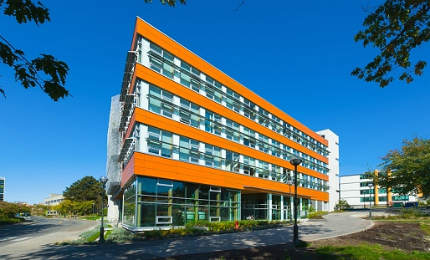 #
#
The Centre for Interactive Research on Sustainability (CIRS) at the University of British Columbia (UBC) campus in Vancouver is one of the greenest buildings in North America.
Opened in November 2011, the centre is now dedicated to research in design and operation of sustainable buildings, environmental policies and community engagement.
The CIRS is part of a $150m UBC Vancouver institutional campus’s sustainability effort to reduce its greenhouse gas emissions by 33% by 2015. The campus aims to achieve a 67% reduction by 2020 and 100% by 2050.
The structure is a U-shaped, four-storey building, oriented to allow maximum daylight and shade. The 60,000 square feet facility has narrow floor-plates in the wings to maximise the exposure of the exterior walls to sunlight and fresh air.
A steel mesh and framework wall are built on the western side of the building to allow vines to climb on it. It acts as a living wall and provides shade in summer. The roof and sunshades on windows have photovoltaics and solar collectors to generate energy and hot water requirements.
The building generates its own power from waste and renewable resources and produces drinking water from rain water.
The Pinnacle, UK
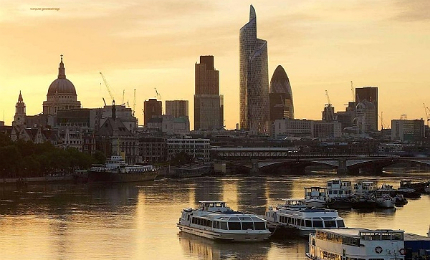
The Pinnacle, formerly known as Bishopsgate Tower or Helter-Skelter, is a skyscraper under construction at the centre of London’s financial district. The tower, measuring 288m-high once completed, will be the tallest in the City of London and the second tallest in Europe.
The façade will consist of two different layers of glass, with a cavity in between them for a free flow of air. The sealed inner layer will comprise thermally broken, double glazed, weatherproof glass.
The outer blue glass layer will have a snakeskin design. The flat panels will be installed at an angle and overlap each other to create partial open spaces, which will protect the building against harsh winds.
The building will incorporate several sustainable features, such as low-energy cooling systems, heat recovery systems and an energy efficient plant. About 200kW of electricity will be produced through 90,000 photovoltaic panels planned to be installed on the rooftop and the façade at the spiralling top.
The project is expected to meet the Excellent rating requirements of Building Research Establishment Environmental Assessment Method (BREEAM).
Nasa Sustainability Base, US
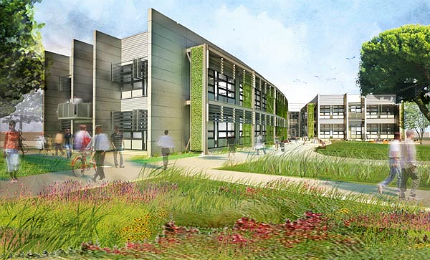
Inspired technologies, developed for space exploration and aeronautical programmes, Nasa’s Sustainability Base is a newly opened office building in California, US.
The facility is considered to be the greenest federal building and one of the most sustainable buildings in the country. It achieved a Leadership in Energy and Environmental Design (LEED) Platinum certification, the highest green performance rating awarded by the US Green Building Council, in April 2012.
The project is part of the Nasa’s Renovation by Replacement (RbR) programme, initiated in 2007 to replace old and inefficient buildings.
Sensors, control systems, recycling and building monitoring software make the Sustainability Base an intelligent facility. It can recognise and automatically respond to changes in external and internal environments, such as wind, sunlight, occupancy, temperature, CO2 and noise levels, to optimise its performance.
Some of the technologies include a greywater recycling system, computational fluid dynamics for environmental analysis, prognostics to minimise maintenance, an inductive monitoring system (IMS) for building monitoring and operations and a hybrid diagnostic engine to monitor the geothermal system.



